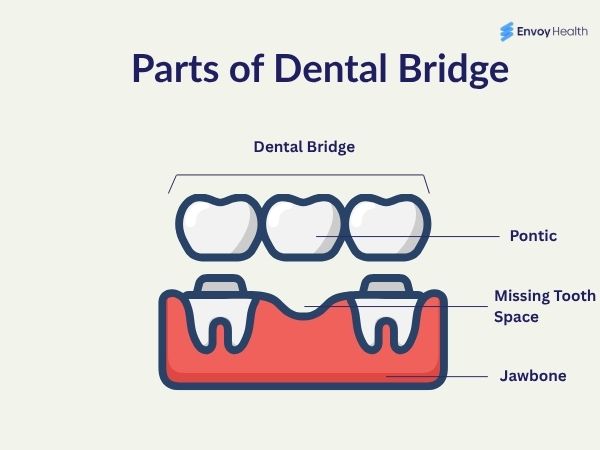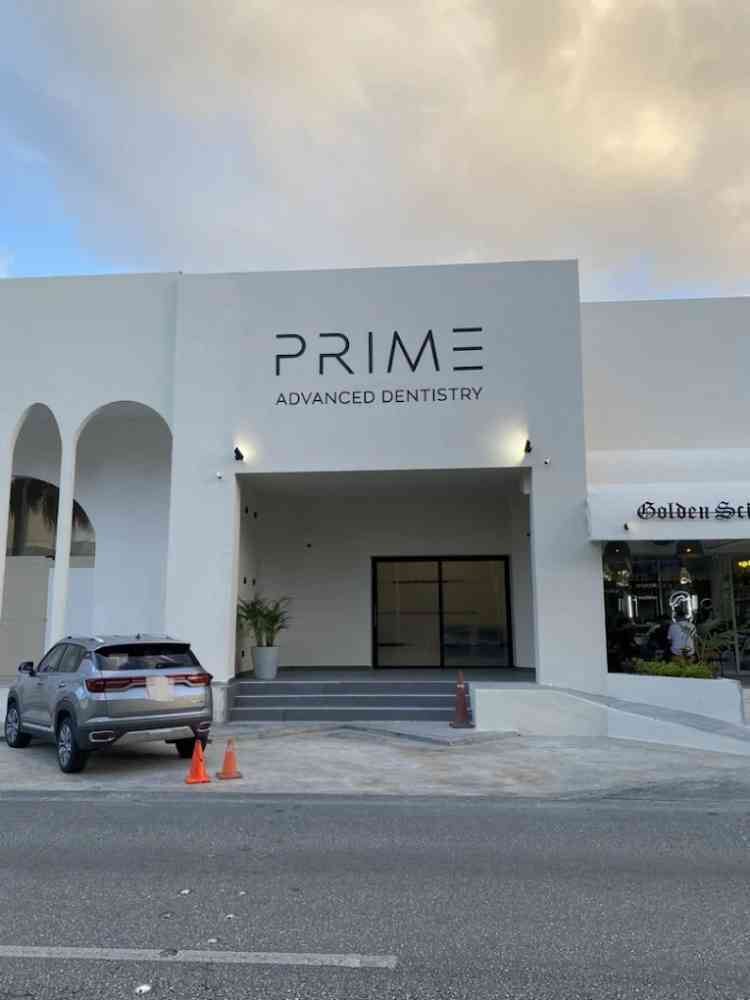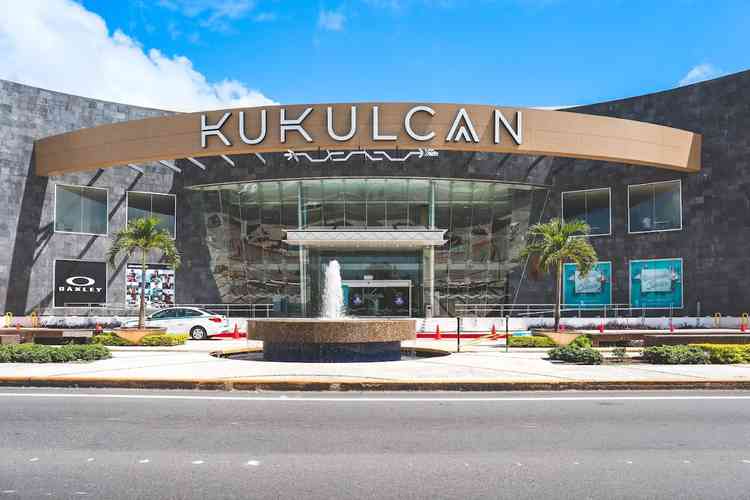Average Dental Bridge Cost: Understand the Pricing, Materials, and Which Option Fits You Best

Prathyusha Itikarlapalli
- Content Writer

XAVIER PRIMO PAVÓN
- Reviewed by

Table of contents
- Understanding a Dental Bridge
- Dental Bridge Cost Without Insurance
- Reasons Why Dental Bridges Are Expensive
- Average Cost of a Dental Bridge With Insurance
- Pros and Cons of Getting a Dental Bridge
- Dental Bridge Procedure
- Alternatives to Dental Bridges You Can Consider
- How to Decide Between a Dental Bridge and Other Options
Key Takeaways
- Dental bridge costs vary based on dental material, the number of missing teeth, and the dentist and clinic location. Bridges made from porcelain and zirconia cost more than porcelain-fused-to-metal and all-metal bridges.
- The average cost of a dental bridge in the United States ranges from $1,500 to $16,000. The 2-unit dental bridge costs the lowest at around $1,500, with bridge costs rising with each additional tooth unit.
- Insurance may cover up to 50% of dental bridge costs for medically necessary cases, but patients are usually subject to a waiting period, and coverage depends on factors like choosing an in-network dentist, deductible, and premium.
What Is a Dental Bridge?
Dental bridges are prostheses that replace missing teeth. Studies suggest that tooth loss is a growing concern among the aged population. Around one in three adults 65 and above are losing over 6 or more teeth.[1] And living without teeth isn’t just about compromising on eating good food. It's about disturbing the quality of life, affecting speech clarity, lowering self-esteem, and affecting social relations. Most people look for treatments such as dental implants, bridges, and crowns to replace missing teeth. Among others, tooth bridges are a commonly opted procedure, thanks to their minimally invasiveness.
Dental bridges feature dental crowns on either side, with pontics (artificial teeth to fill the gap). These are custom-crafted from dental materials such as porcelain-fused-to-metal, all-porcelain, and all-metal (less common for front teeth). Bridges appear as a series of 2-5 teeth held together in a line. Dentists cement them to the adjacent healthy teeth or to implants on either side of the missing tooth gap.[2] Here are the parts of a dental bridge for better understanding.
- Abutment crowns: These fit over the natural teeth or implants on either side of the tooth gap. Depending on the bridge type, there are either one or two crowns on a single or both sides of the bridge, which typically hold the bridge over the gap.
- Pontics: These are artificial teeth that replace the space left by missing teeth. Their number equals the number of missing teeth, so the function and appearance are restored properly.
- Connectors: These hold the pontics to the abutment teeth and blend seamlessly, typically being invisible. Depending on the location of missing teeth, connectors are either rigid (tight and fixed) or flexible (allowing slight movement).

Dental Bridges Types
Below, we detail the various types of dental bridges:
- Traditional dental bridges are the commonly available type. These come with a series of 2-3 pontics held on either side by the abutment crowns. Dentists reshape the abutment teeth, collect tooth impressions for bridge preparation, and send them to the dental laboratory. Once the dental bridge is ready to be fixed, they cement the abutment crowns on the prepared natural teeth to prevent the bridge from moving out of place.
- Cantilever dental bridges work similarly to traditional bridges but feature the pontic tooth supported by a single abutment tooth. These avoid the second abutment tooth and are preferred for front teeth, especially when you lack healthy natural teeth on either side of the fallen tooth gap.
- Maryland dental bridges use pontics held to the natural teeth with tooth-colored wings. They are also called the resin-bonded bridges. Instead of abutment crowns, these come with wings attached to the back of the natural teeth, so the bridge stays in place and fills the missing tooth gaps. These are chosen for aesthetics rather than for teeth that require a strong bite force. Hence, they are called front tooth dental bridges.
- Implant-supported dental bridges are the strongest and most durable option. Instead of the abutment crowns or wings, these are fixed over the dental implants. Because they come with dental implants, expect relatively higher costs and an invasive procedure. However, the durability speaks to the worth.
Types of Dental Bridge Materials
Below, we detail the various commonly used dental materials for dental bridges.
- Porcelain-fused-to-metal dental bridge: PFM bridges are durable yet affordable. These come with a metal base supporting a tooth-colored porcelain exterior for a natural-looking appearance.
- All-porcelain dental bridge: Made from all-porcelain, these dental bridges offer better aesthetics and are ideal for front teeth. However, they are costly and cannot withstand stronger bite forces. Hence are best chosen for front teeth.
- Zirconia dental bridge: Made from zirconia, these bridges are much stronger and sturdier than any other type. Besides, they are better known for their aesthetics and are relatively costly compared to other types. Dentists recommend zirconia dental bridges for back teeth, mainly because of their permanence and ability to withstand strong bite force.
- All-metal dental bridge: These are very durable and less natural-looking, making them a budget-friendly option. Most opted for back teeth, but these are not suitable for patients with metal allergies.
How Much Does a Dental Bridge Cost Without Insurance?
The average cost for dental bridge work ranges from $1,500 to $16,000. Generally, the average bridge cost depends on the number of missing teeth, the type of dental bridge, the material used, and the clinic's location.
The more missing teeth, the higher the bridge cost. A 2-unit dental bridge costs the least, which is around $1,500. For every additional tooth needed to fill a missing-tooth gap, the cost of the bridge can increase. So a 3-tooth bridge costs around $2,000, and a 4-tooth bridge costs $2,500. In most cases, traditional and resin-bonded dental bridges cost less than those secured by dental implants. Below, we tabulated the average bridge costs for single-tooth gaps.
Dental bridge costs
|
Dental bridge |
Average cost for a single gap |
|
Traditional dental bridge |
$2,000 |
|
Cantilever dental bridge |
$2,000 |
|
Maryland dental bridge |
$1,700 |
|
Implant-supported dental bridge |
$5,000 |
#Prices may vary with case.
Here is a better understanding of the cost factors that influence the dental bridge costs.
- Number of missing teeth: Dental bridges that are used to cover larger tooth gaps cost more compared to those used for smaller gaps.
- Type of dental bridge: Generally, implant-supported bridges cost more, while resin-bonded bridges cost the least. While costs vary, the benefits they offer differ greatly. The costly implant-supported dental bridges have durable results and last longer. However, the resin-bonded bridges are less sturdy and are suitable for the front teeth.
- Material used: All-porcelain dental bridges are more costly than porcelain-fused-to-metal bridges and all-metal bridges. The higher the costs, the exceptional the results they deliver. For instance, the expensive all-porcelain dental bridges blend seamlessly wth the surrounding natural teeth, and offer a natural look. On the other hand, porcelain-fused-to-metal and all-metal bridges don’t prioritise aesthetics but offer durability.
- Procedures for supportive teeth: These relate to tooth preparation for anchoring a dental bridge. Bridges fixed on dental implants cost more than those fixed on prepared abutment teeth. You also need to bear the implant costs.
- Additional procedures for dental examination: These unavoidable costs are associated with any dental procedure. For instance, you incur additional costs for dental examinations with X-rays, tooth extractions, and professional cleanings. These help your dentist gain a clear idea of your oral condition and suggest the right bridge type suitable for you. Further, it also prevents future complications and infections caused by poor oral hygiene.
- Geographical location: Generally, dental bridge costs tend to be higher in large metropolitan areas than in rural or suburban regions due to higher clinic maintenance, staff salaries, and operational costs. For example, the average cost of a dental bridge in Ontario is around $2,952, similar to the average cost of a dental bridge in California at $2,952. However, prices rise in other regions. The average cost of a dental bridge in Florida is approximately $5,131, while in Texas, it’s about $4,806. In the UK, the average cost of a dental bridge is roughly $3,025. These variations highlight how geographical location significantly influences dental bridge pricing across different countries and states.
Average Cost Dental Bridge Replacement
The average cost of dental bridge replacement ranges from $1,500 to $16,000, with the exact price depending on the type of bridge and the number of missing teeth. Typically, you will need a dental bridge replacement due to damage to the abutment teeth, which compromises the bridge's functioning. Further, you will also need the bridge replacement due to excessive wear and tear, decay, or gum disease.
Why Are Dental Bridges So Expensive?
Dental bridge treatment can seem expensive for many due to the high-quality dental materials, the complexity of the procedure, and the intensive labour involved. While high-quality dental materials such as zirconia and porcelain cost much more, the fabrication costs are equally demanding. It's because the dental bridges are custom-fit prostheses designed to match the patient’s bite, tooth color, and alignment. The success of the dental bridge treatment depends heavily on the dentist’s expertise and the dental lab’s craftsmanship, both of which contribute to the overall expense.
Don’t worry, in case the expensive dental bridge costs are a concern. The dental bridge cost with insurance can ease your financial burden.
Average Cost of Dental Bridge With Insurance
Dental bridges are considered a major restorative procedure, and insurance covers 50% of costs when they are for medically necessary reasons. For insured patients, dental bridges cost between $750 and $1,500 in the United States. Note that the exact price varies with the deductible, coverage percentage, and other benefits, such as annual maximums, wait periods, and your choice of an in-network or out-of-network dentist. Know more details by reading this:
- Coverage percentage: Most insurance plans cover 50% of dental bridge costs, while you need to pay the remaining costs out-of-pocket.
- Annual maximum: Many insurance plans have a specified annual maximum. And any bridge costs exceeding this limit will require you to pay the remaining costs out of pocket.
- Waiting period: Some insurance plans require a 6-12 month waiting period before your treatment. Many insurers mandate wait periods to prevent people from buying insurance just to get costly dental work and then canceling their policy.
- Pre-authorization: You will obtain a pre-authorization from your dentist and submit it to the insurance provider before scheduling treatment. These documents should clearly state the medical necessity of your dental bridge procedure.
- Out-of-network costs: Most insurance providers offer a list of in-network dentists. Choosing one will reduce your out-of-pocket expenses. Getting treated by an out-of-network dentist amounts to self-expenses to some extent.
Pros and Cons of Dental Bridges
Below, we have tabulated the pros and cons of dental bridges to better understand them.
Dental bridge: Advantages versus disadvantages
|
Pros of a dental bridge |
Cons of a dental bridge |
|
Natural-looking solution |
Requires healthy, natural teeth to hold the bridge |
|
Enhances smile appearance, chewing, and clarity of speech |
Does not prevent jawbone loss as an implant does |
|
Replaces multiple teeth |
Limited lifespan of around 5-15 years, after which you will need replacement |
|
Easy to maintain, just like natural teeth |
Risks of decay due to compromised oral hygiene or faulty bridge placement |
Dental Bridge Procedure
Getting a dental bridge typically requires at least two visits to the dental clinic. During the initial appointment, your dentist will shape the abutment teeth and take impressions to design the bridge. You’ll leave the clinic with a temporary bridge placed over the prepared teeth for protection and function. Once your permanent bridge is ready to be fixed, the dentist will remove the temporary one and secure the new bridge in place using dental cement.

Aftercare for the Longevity of the Dental Bridge
Caring for your tooth bridge is very similar to caring for your natural teeth. While a dental bridge treatment can seem costly, following appropriate aftercare will ensure its worth. Follow the steps specified below to ensure the longevity of your dental bridge.
- Brush your teeth two times a day and floss them regularly to remove the trapped food debris. This will lower the chances of tooth decay.
- Rinse your oral cavity with an effective antibacterial mouthwash to reduce your risk of dental plaque and tartar buildup.
- Avoid eating hard, crunchy foods such as nuts, crackers. Biting them too often can weaken the bridge, causing cracks and chips. Besides, avoid over-reliance on sugary, sticky foods like jellies, candies, caramel, and gummies. These can stick to the teeth, serve as a continued food source for bacteria, and cause decay.
- Avoid consuming foods that are too hot, too cold, or highly acidic, as they can trigger sensitivity in the abutment teeth. Tooth preparation for abutment teeth involves removing enamel, which can increase sensitivity.
Are There Any Alternatives to Dental Bridges?
While dental bridges offer numerous advantages, some patients seek alternatives mainly because of their high cost and the laborious process that requires multiple dental visits. Dental implants, partial and complete dentures, stand as effective alternatives to dental bridges. Note that every healthcare choice has its own pros and cons.
Dentures, whether partial or complete, are a less invasive, low-cost alternative. However, these aren’t a wiser approach when you are looking for a permanent solution. They pose a slipping hazard. On the other hand, tooth implants are a permanent solution but come with a higher price tag. In fact, the cost dental bridge vs implant is more feasible, making bridges a more affordable method. Further implants are an invasive method compared to dental bridges, requiring a longer recovery.
How Do You Choose Between a Dental Bridge and Other Alternatives?
Simplify your decision on dental bridges and other alternatives by considering the following points.
- Compare the cost of a bridge versus an implant, and dentures
- Weigh the time taken for the procedure, along with the number of visits
- Quality of the jawbone and the condition of the adjacent teeth
- Risk factors specific to the case, such as infections, poor healing due to diabetes, and metal allergies
- Longevity of the procedure you consider (whether it's a bridge, implant, or denture) and the maintenance costs, and repeated procedures associated with them
Final Word!
Getting a dental bridge is a long-term investment in your smile and oral health. While prices can vary widely based on materials, the number of teeth involved, and your dentist’s location, understanding these factors helps you plan your treatment better. Comparing costs, checking your insurance coverage, and consulting with an experienced dentist will ensure you find the right balance between quality and affordability.
If you’re ready to restore your smile without the stress of overpaying, sign up with Envoy Health today. We connect you with trusted dental specialists and transparent pricing options to make your bridge treatment simple, affordable, and worry-free.
References
Disclaimer
The information in this article is for educational purposes only and does not replace medical advice. Always consult your doctor before starting any treatments.
Yes, a dental bridge is cheaper than a dental implant. The average cost of dental bridge without insurance ranges between $1,500 and $16,000, depending on the type and number of missing teeth. However, a single dental implant begins at around $5,500 per missing tooth. The overall cost of implant treatment can reach $40,000 if you choose multiple implants and full-mouth restoration.
A 2 tooth bridge costs you around $1,500, making it the most affordable choice among the dental bridges. However, you will need one healthy tooth adjacent to the gaps left by the missing teeth to receive this treatment.
Yes, insurance covers 50% of dental bridge costs, provided it is deemed medically necessary. The related financial aspects vary by insurance type, premium, wait time, and maximum deductible.
Dentists in the United States charge anywhere between $1,500 and $16,000 for dental bridge treatment. The actual cost varies by bridge type, the number of missing teeth, and the clinic's geographical location. Generally, located in urban metropolises charge expensive prices because of the added charges for clinic maintenance, equipment, technology, and staff salaries.
So, we partner with the premier healthcare facilities!
Send me the list









